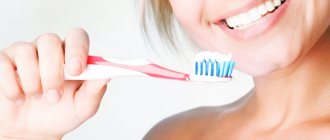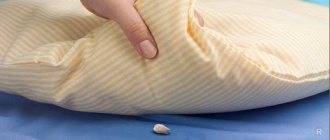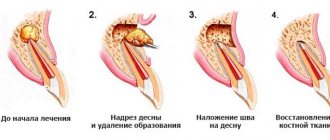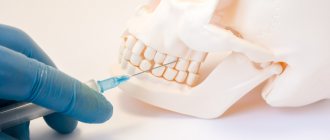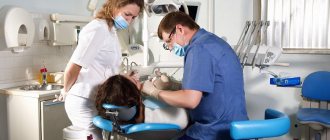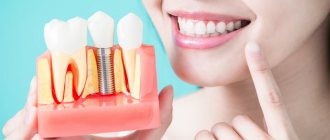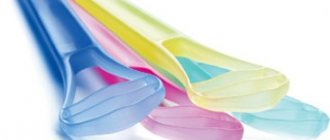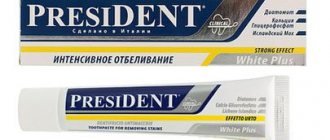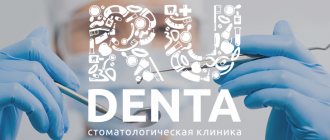The role of oral hygiene in the prevention of dental diseases.
Hygiene products.
Oral hygiene items. Teeth cleaning methods. Oral hygiene
divided into individual and professional. The topic of our lecture concerns individual oral hygiene.
Oral hygiene is one of the sections of human personal hygiene. Like any hygiene, it is aimed at maintaining a good level of health and preventing diseases.
Personal hygiene is the careful and regular removal by the patient of dental plaque from the surface of the teeth, gums and tongue using various means.
Oral hygiene goals
One of the most important tasks of oral hygiene is cleansing food residues, detritus, and microflora.
Another task of hygiene is to introduce into the oral cavity products that have a positive effect on the properties of its organs, strengthening their resistance and functionality. To solve these problems, various oral care products and products are created.
Oral hygiene items
The main hygiene items are: toothbrushes, toothpicks, floss (dental floss), dental stimulants, dental brushes, irrigators.
A toothbrush is the main tool for oral hygiene, teeth cleaning, and organic administration of various preparations that strengthen the organs and tissues of the oral cavity.
The structure of any toothbrush is typical: it consists of two main elements - a working part (head) with tufts of bristles fixed in it and a handle.
Toothbrushes are different:
- Dimensions
- Head shape
- Properties of fibers
- Beam arrangement
- Rigidity
- Handle design
Oral hygiene
Plan
1. Introduction
2. Oral hygiene
3.Oral care methods
4.Literature
Introduction
Research by domestic and foreign scientists indicates a high prevalence among the population of such processes as dental caries and marginal periodontal disease, which is due to a large number of exogenous and endogenous factors. The reasons that influence the occurrence, as well as the severity of a particular disease, are the criteria for assessing risk. Risk factors or “putative risk factors” are those that, under certain conditions, can lead to the occurrence or complication of the disease. Establishing the causes of the disease is necessary to develop measures for their prevention.
The causes of a disease can be sufficient (those that inevitably lead to certain consequences), additional (which are not sufficient in themselves) and necessary (those whose presence is mandatory for the occurrence of a disease). To prevent a disease, it is not necessary to know all additional causes, and by excluding even one of the elements of sufficient causes, all cases of the disease can be prevented.
It has been proven that the most significant cause of dental caries and inflammatory processes in the marginal periodontium are plaque microorganisms. Therefore, the etiotropic treatment and prevention of the initial forms of these lesions (caries in the spot stage and mild catarrhal gingivitis) will be the elimination of pathogenic bacteria, i.e. adequate oral hygiene.
Oral hygiene
Hygiene (Greek hygienos - healing, bringing health) is a branch of medical science that studies the influence of environmental factors on humans and develops optimal requirements for the conditions of human life.
For dentists, oral hygiene is the science and practice of reducing the amount of dental plaque to a level that is safe for dental tissue and marginal periodontium.
There is a distinction between individual and professional oral hygiene. Individual oral hygiene refers to activities that a person carries out independently, usually at home.
Professional oral hygiene is a system of scientifically based treatment and preventive measures performed by medical personnel, aimed at improving the health of organs and tissues of the oral cavity, as well as preventing the occurrence and progression of dental diseases.
It should be clarified that the concept of “professional hygiene” includes not only mechanical removal of dental plaque. There are three main groups of activities: preventive, educational and therapeutic.
The main stages of professional oral hygiene are:
- Index assessment of the hygienic state of the oral cavity.
- Patient motivation.
- Antiseptic treatment of the oral cavity.
- Anesthesia.
- Removal of dental plaque.
- Grinding and polishing of teeth.
- Oral irrigation.
- Quality control of performed manipulations.
- Fluoride prevention.
- Selection of individual hygiene products and training in hygiene skills.
- Determining the date of the next visit.
1. Index assessment of the hygienic state of the oral cavity. For index assessment of the hygienic state of the oral cavity, many indices are used. The most common among them are OHI-S (JC Green, JR Vermillon, 1964) and PLI (Sylness, H. Loe, 1964).
The OHI-S index is determined using a dental probe. The buccal surface of teeth 16 and 26, the labial surface of 11 and 31, and the lingual surface of 36 and 46 are assessed for the presence of hard and soft dental plaque, and the teeth should not be affected by caries. For examination, the probe is installed parallel to the axis of the tooth and begins to move it in a zigzag motion from the occlusal surface to the neck, noting the level at which there is plaque. The following scores are used: 0 – absence of plaque; 1 – dental plaque covers no more than 1/3 of the tooth surface; 2 – dental plaque covers from 1/3 to 2/3 of the tooth surface; 3 – dental plaque covers more than 2/3 of the tooth surface. Dental plaque index (DI-S) is calculated using the formula:
Sum of indicators of 6 teeth
DI-S = ————————————
6
An indicator of 0.0-0.6 indicates good oral hygiene, 0.7-1.8 – satisfactory, and 1.9-3.0 indicates poor hygienic condition.
The calculus index (CI-S) is assessed in the same way as dental plaque: 0 – no calculus; 1 – supragingival stone on 1/3 of the tooth surface; 2 – supragingival stone on 2/3 of the surface of the crown or separate areas of subgingival stone; 3 – supragingival calculus covers more than 2/3 of the tooth surface or subgingival calculus surrounds the neck of the tooth. The tartar index is calculated using the same formula as dental plaque.
OHI-S = DI-S + CI-S
The simplified hygiene index (OHI-S) is assessed using the following values: 0-0.6 good oral hygiene; 0.7—1.6 satisfactory; 1.7—2.5 unsatisfactory; more than 2.6 – poor oral hygiene.
The PLI plaque index is also carried out using a dental probe without staining and allows you to assess the hygienic condition of all or individual teeth. Visually inspect the four surfaces of the tooth (vestibular, oral, distal and medial) for the presence of soft dental deposits. The amount of plaque on the tooth surface is determined by the following assessments: 0 points – no plaque in the gingival area; 1 point – a thin film of plaque in the gingival area is detected only with a probe; 2 points – plaque is visible in the cervical area; 3 points – there is a significant amount of plaque on most of the tooth surface and in the interdental spaces. The plaque index of one tooth is calculated using the formula:
S scores of four surfaces
PLI (tooth) = ———————————————-
4
Oral PLI is calculated as the sum of the scores of all examined teeth divided by their number.
2. Patient motivation. Long-term work with patients convinces us that an important task of a dentist in the treatment and prevention of dental diseases is to motivate, educate and instruct the patient. The most important thing is to find in the patient a conscious and actively helping ally in the fight against his disease. It can be very difficult to find the right words and arguments. Our speech is a universal code that we use to exchange information with other people. We can easily form perceptions of reality that are unnecessary to us, when decoding, giving words a meaning that is completely different from the original one. Using speech, we generalize, distort and omit a lot of information from previous experience. How much time and effort is wasted when the patient does not correctly understand the doctor’s words.
In an individual conversation with a patient, the dentist must have sufficient authority. With an indifferent and negative attitude towards his work, the doctor is not able to thoughtfully and carefully listen to the patient’s complaints, makes medical errors and shows aggressiveness and irritability, thereby losing trust. The doctor should show healthy optimism, honesty and truthfulness. The doctor’s words have a huge suggestive (suggestive) influence on any person, especially on the patient. Therefore, it is important to treat the conversation with sufficient responsibility. The patient should not be deprived of the opportunity to take care of himself and his health by correctly adjusting behavior and creating conscious positive goals. It's always better to help than to save.
Motivation is the motivation that causes the patient’s activity and determines the direction of his actions. The task of a dentist is to ensure that the patient has a persistent need for careful attention to his health in general and dental health in particular. It is necessary to convince a person that thanks to regular and high-quality oral hygiene and preventive examinations at the dentist, you can get rid of toothache and the need to have removable dentures in old age. The conversation should be structured in such a way as to very tactfully prompt the patient to answer the question “why should I do this?, What’s the point?”
Observation of children showed that forcible imposition and coercion causes a sharp response. Therefore, the following techniques and types of motivation will be effective for young patients. Visual motivation, i.e. personal example of parents at home, in a clinic - indicating dental plaque using dyes and showing colorful brochures, and when conducting hygiene lessons - showing videos. Auditory motivation involves verbal reasoning, discussion, and persuasion about the need to maintain good oral health care. Tactile motivation is the feeling of smoothness and comfort that a child receives after professional dental hygiene treatment in a clinic and what he should strive for when caring for the oral cavity at home. Olfactory motivation includes the feeling of fresh breath as a factor of health, cleanliness and beauty.
3. Antiseptic treatment of the oral cavity (rinsing or irrigation) is a mandatory procedure before and after removing dental plaque. Chemicals used as antiseptics include:
- oxidizing agents (0.5 - 1.5% hydrogen peroxide, 0.1% aqueous solution of potassium permanganate);
— halogens (1% aqueous solution of iodinol);
- detergents (0.02 - 1% ethonium, 0.05% chlorhexidine bigluconate, 0.025% decamethoxin);
— phenol-containing antiseptics (listerine, triclosan);
- nitrofuran derivatives (0.02% furatsilin, 1:25000 furazolidone);
- salts of heavy metals (0.25% copper sulfate, zinc lactate).
In addition, you can use rinses (Plax, Healing Balm and others) and herbal tinctures (calendula, chamomile, St. John's wort, etc.) with an alcohol content of up to 7%.
4. Pain relief. Removal of pain sensitivity is carried out in accordance with indications and contraindications. For this purpose, local application, infiltration or conduction anesthesia is used. Anesthesia allows the doctor to more thoroughly and efficiently perform the teeth cleaning procedure. For topical anesthesia, a 10% lidocaine spray, xylonor gel or lidoxor, etc. can be used. Infiltration and conduction anesthesia is often performed with drugs based on 4% articaine with adrenaline, 3% mepivacaine or 2% lidocaine.
5. Removal of dental plaque can be carried out using various methods: chemical, manual, electromechanical, rotary instruments for an angled or special handpiece, as well as using a surgical laser. The effectiveness of professional dental plaque removal depends on the knowledge and manual skills of the doctor, on his conscientiousness and practical experience.
Basic principles of dental plaque removal:
a) detailed collection of anamnesis of general somatic diseases;
b) determination, using a probe and special dyes, of the type of dental deposits (soft or hard), their quantity and location (supragingival or subgingival);
c) adequately select the means and method for removing dental plaque;
d) good lighting is necessary;
e) the doctor-patient-assistant position should be maintained in accordance with ergonomics;
f) correctly fix instruments, use appropriate intra- and extraoral supports, protect surrounding tissues from damage;
g) take into account the principles of systematic and sequential removal of dental plaque in order to cover all surfaces of the selected group of teeth;
h) in accordance with the diagnosis, set a specific date for a follow-up visit for prevention and maintenance therapy.
To soften the density of mineralized dental plaque, a number of chemicals, usually acids, are used. There are special preparations such as Detartrol ultra or Depuration Solution, which are applied to the tooth surface for 30-60 seconds, after which they are washed off, and the tartar is removed using the usual method.
Manual removal of dental plaque. There are special sets of instruments for manual removal of dental plaque, which include various types of instruments, the main ones being: periodontal probes, crescent scalers, hooks, Gracey curettes, excavators, files, chisels. Using probes, periodontal pockets are identified, their length and depth, tartar, overhanging edges of fillings and crowns, and the presence of carious cavities are detected. To remove stones firmly attached to the tooth, scalers, hooks (or universal curettes), excavators, files and chisels are used. Gracey curettes are thinner instruments and are designed for finishing the tooth surface, namely for smoothing the root surface and removing granulation tissue. A distinctive feature of scalers and hooks (universal curettes) from Gracey curettes is the angle between the front surface and the lower third of the rod. For hooks and scalers the angle will be 90°, and for Gracey curettes it will be 70°. A distinctive feature of scalers is the sharp tip of the instrument, while hooks and curettes have a rounded end.
Size
Toothbrushes can be large, medium or small. This has more to do with the size of the head. If previously brushes with a large head were mainly used, now, based on scientific research data, they have come to the opposite conclusion.
Nowadays (for both adults and children) it is recommended to use brushes with small heads that are easy to manipulate in
oral cavity and clean hard-to-reach tooth surfaces.
The most optimal for children are brushes with: a length of the working part of the head of 18-25 mm and a width of 7-8 mm. For adults - 23-30 mm and 7.5-10 mm, respectively.
